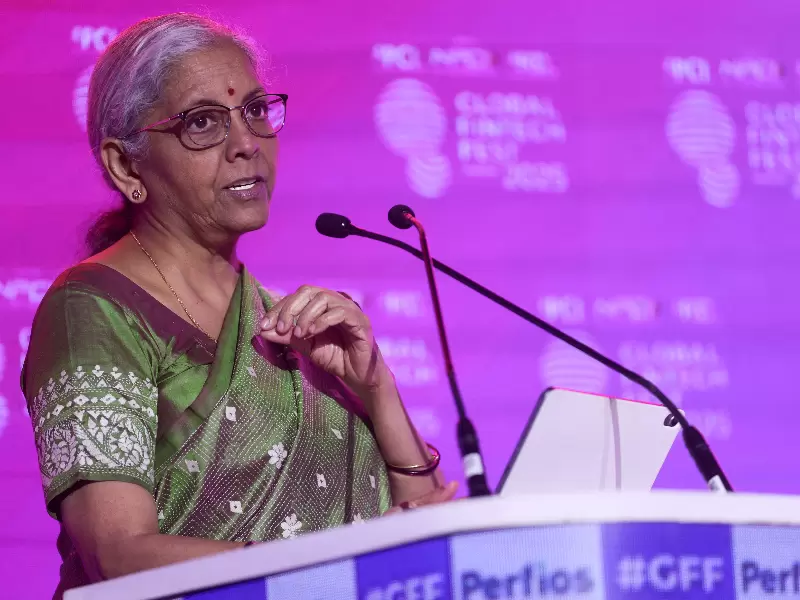GST overhaul: Big bang reform or balancing act?
Economists caution that the reform will only succeed if it balances revenue neutrality with consumption support.
.jpg) Representative image / Pexels
Representative image / Pexels
A toothbrush, a hair oil bottle, even a pencil – the everyday items in India’s shopping basket may soon get cheaper. The government is readying a sweeping revamp of GST that promises to cut consumer taxes and fire up demand before Diwali. But industry insiders warn the fine print could sting.
The broad contours of the plan are clear. Multiple slabs are to be collapsed into just two: a 5 percent “merit rate” for essentials and a standard 18 percent rate for most goods and services. The top slab of 28 percent – often criticised as punitive – will be scrapped, with items shifting down to 18 percent.
Almost all goods taxed at 12 percent will move to 5 percent, barring a sliver that migrates upward. A 40 percent peak will remain for tobacco and “sin goods,” while exemptions and ultra-low rates (0.25 percent and 3 percent) are untouched.
Two-day meeting of GST Council to begin on Sept 3. The 56th Meeting of the GST Council will be held on the 3rd and 4th of September in New Delhi. Union Finance Minister Nirmala Sitharaman will chair the meeting.
Industry cheers – with riders
For small traders, the reform is being billed as a long-overdue “consumer bonanza.” The Confederation of All India Traders (CAIT) hailed Prime Minister Narendra Modi’s announcement, but quickly pressed its case for beverages, which account for nearly a third of kirana store sales. “Rationalising GST on carbonated beverages into the 18 percent slab would ease operating pressures and accelerate formalisation,” said CAIT President B.C. Bhartia, pointing out that higher levies have squeezed liquidity for sellers working on wafer-thin margins.
The Hotel Association of India (HAI) also welcomed rationalisation but warned that tourism competitiveness hinges on aligning tax rates with global benchmarks. Currently, hotel rooms priced up to ₹7,500 attract 12 percent GST, with tariffs above that taxed at 18 percent. HAI wants the threshold raised to ₹15,000 to reflect inflation, and has called for a uniform 5 percent GST with input tax credit across hotels, restaurants, and tourism services. “The 18 percent rate is too prohibitive and risks pricing India out of global competition,” said HAI President Kachru.
The edible oil industry struck a sharper note. The Indian Vegetable Oil Producers’ Association (IVPA) said restrictions since 2022 on refunds of accumulated input tax credit (ITC) under the inverted duty structure have choked working capital and discouraged investment. While edible oil attracts 5 percent GST, most inputs are taxed higher at 12–18 percent. “Blocking refunds makes operations less viable, especially for MSMEs. The burden gets passed on to consumers, pushing prices up and creating health risks as lower-income groups shift to unsafe, adulterated oils,” IVPA said in a memorandum to the Revenue Secretary.
ALSO READ: India needs to grow by 8% amid geopolitical uncertainties, finance ministry says
Fiscal balancing act
Economists caution that the reform will only succeed if it balances revenue neutrality with consumption support. About 67 percent of GST revenue today comes from the 18 percent slab, with another 10–11 percent from the 28 percent category that may now shift lower. That implies significant revenue loss unless offset elsewhere.
“The Centre has proposed to overhaul the GST structure to lower the overall incidence of tax and aid consumption,” said Madan Sabnavis, chief economist at Bank of Baroda. “But any restructuring has to be a zero-sum game – if the consumer gains, the budget must absorb the let-off. That, however, can correct itself if the economy grows faster in the coming years.”
Sabnavis warned that while shaving rates on everyday goods like hair oil and pencils may not trigger a surge in consumption, they will free up household resources. “At the micro level, this means households can reallocate spending to other products and services. That could in turn spur investment in sectors that see higher demand,” he said.
Inflation wild card
The government has pitched the reform as inflation-friendly, but the reality could be more complicated. Lowering taxes on consumer goods should ease pressure on retail prices, particularly if items migrate from the 28 percent bracket to 18 percent. But if some products are moved into the 40 percent “sin tax” band to offset revenue losses, inflationary pressures could emerge. The effect on the Consumer Price Index will depend on which categories see relief and which are pushed higher.
“While it has been projected as lowering the tax burden, there can also be a tendency for inflation to come down. But the extent will depend on the individual tax rates and how they affect CPI weights,” Sabnavis said.
Reform, but With gaps
The symbolism of simplifying GST into just two slabs is powerful. It promises cleaner compliance, reduced disputes, and easier administration. But the gap between promise and practice remains wide. Traders want relief on beverages, hoteliers want thresholds revised, and edible oil refiners want refunds restored. Each sector sees the reform through its own lens – supportive, but not sufficient.
The political calculus is clear: the government wants to sweeten the festive season with a visible cut in consumer taxes. The economic calculus is less straightforward. Unless the Council addresses revenue neutrality and sector-specific distortions, the reform risks being more optics than overhaul.
ADVERTISEMENT
ADVERTISEMENT
E Paper
Video



 R Suryamurthy
R Suryamurthy












Comments
Start the conversation
Become a member of New India Abroad to start commenting.
Sign Up Now
Already have an account? Login